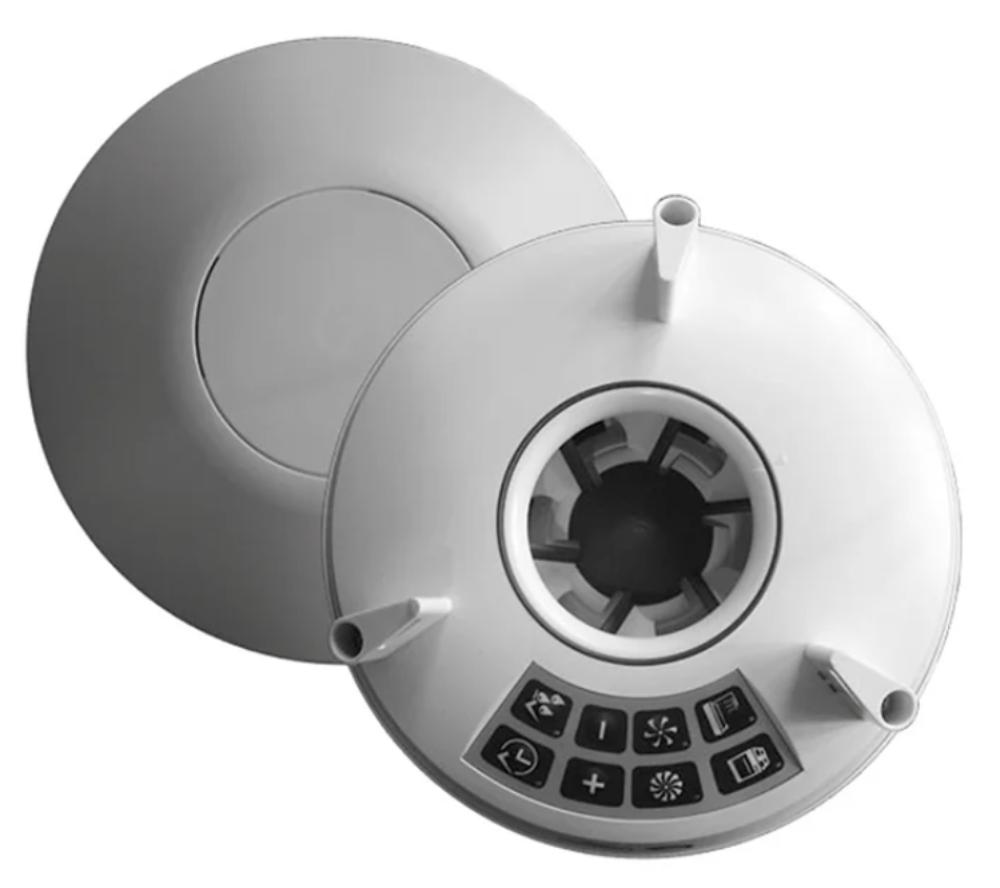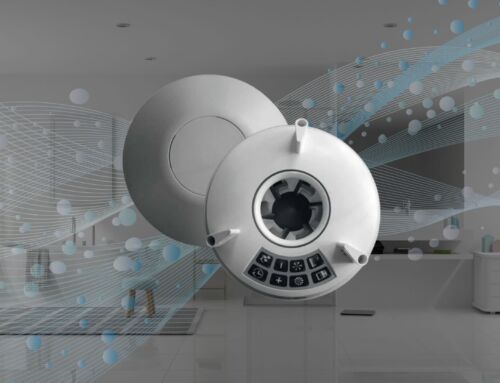Ventilation plays a critical role in maintaining a healthy and comfortable indoor environment. With the rise of energy-efficient homes that are more airtight, effective ventilation has never been more important. Two popular systems in the UK residential market are DMEV (Decentralised Mechanical Extract Ventilation) and PIV (Positive Input Ventilation). Each has its own strengths, limitations, and ideal use cases. This article will explore both in detail to help you decide which solution is best for your home.
What is DMEV?
DMEV, or Decentralised Mechanical Extract Ventilation, is a system that removes stale or moist air directly from specific rooms, usually those with high humidity levels such as bathrooms, kitchens, and utility rooms. DMEV units are typically installed through an external wall and operate continuously at a low background level, ramping up to a higher speed when humidity increases (often via a sensor).

How DMEV Works
DMEV fans continuously extract air from a room. The extracted air is replaced by fresh air that enters through background ventilators (such as trickle vents or air bricks). This method maintains a consistent air exchange and helps reduce condensation and mould risk.
Key Features
- Quiet, continuous operation
- Typically fitted in wet rooms
- Humidity sensors can trigger boost mode
- Low energy consumption
- Complies with Part F of Building Regulations
Pros
- Targeted extraction: removes moisture and pollutants at the source
- Quiet and unobtrusive
- Ideal for retrofits in specific problem rooms
- Energy-efficient with low running costs
Cons
- Doesn’t provide whole-house ventilation
- Requires background ventilators to be effective
- Multiple units may be needed in larger properties
What is PIV?
PIV, or Positive Input Ventilation, is a whole-house ventilation system that works by introducing filtered, fresh air into the property, usually from the loft space. This positive pressure pushes stale, moist air out through natural leakage points or background ventilators.
How PIV Works
A PIV unit draws in air (often from the loft, where it is slightly warmer) and filters it before gently pushing it into the home. This process dilutes and displaces indoor air pollutants and humidity, improving air quality throughout the property.
Key Features
- Whole-house solution
- Typically installed in lofts of houses or ceilings of flats
- Integrated filters improve air quality
- Can include heating elements to temper incoming air
Pros
- Improves air quality in the entire home
- Reduces condensation and mould problems
- Low maintenance
- Often more affordable than MVHR systems
Cons
- Requires loft space (in houses)
- Less effective in very airtight homes without adequate leakage points
- Doesn’t extract air at source
- May cause draughts if not properly balanced
DMEV Vs PIV
Let’s compare these two systems across various factors that matter most to homeowners:
1. Scope of Ventilation
- DMEV: Provides localized ventilation, ideal for managing moisture and odours in specific rooms like bathrooms or kitchens.
- PIV: Offers whole-house ventilation, improving overall indoor air quality.
2. Installation Complexity
- DMEV: Easier to install in individual rooms, minimal disruption.
- PIV: Installation is straightforward in homes with loft space but trickier in flats or homes without attic access.
3. Running Costs & Energy Efficiency
- DMEV: Very low running costs due to continuous low-speed operation. Energy-efficient models are available.
- PIV: Also energy-efficient, especially when fitted with low-watt fans. Models with heaters will consume more energy.
4. Maintenance
- DMEV: Requires minimal maintenance; occasional cleaning of fan units.
- PIV: Requires filter changes every 6-12 months.
5. Impact on Indoor Air Quality
- DMEV: Effectively removes humidity and pollutants at the source.
- PIV: Dilutes and displaces pollutants, improving air quality overall.
6. Suitability for Different Properties
- DMEV: Excellent for targeted room-by-room upgrades or where mould is confined to specific areas.
- PIV: Better suited for whole-property solutions, especially where condensation affects multiple rooms.
7. Cost
- DMEV: Lower upfront cost per unit; total cost increases if multiple units are needed.
- PIV: Higher initial cost for the unit, but covers the entire home.
Use Case Scenarios
DMEV is Ideal For:
- Homes with specific damp or condensation issues in one or two rooms
- Flats or apartments without loft space
- Retrofitting in older properties
- Homeowners wanting a quiet, discrete solution for bathrooms or kitchens
PIV is Ideal For:
- Whole-house condensation or mould issues
- Homes with loft space available
- Occupants with allergies or asthma (due to air filtration)
- Landlords or property managers looking for a low-maintenance, cost-effective ventilation system
Can DMEV and PIV Be Used Together?
Yes, and in some cases, it’s the optimal solution. For instance, using a PIV system to maintain whole-house air quality and supplementing it with DMEV fans in wet rooms can provide a comprehensive strategy. This dual approach ensures pollutants and moisture are extracted directly at the source while still benefiting from the dilution and pressurisation effect of PIV.
Regulatory Compliance
Both DMEV and PIV systems can help meet Part F of the UK Building Regulations, which focuses on ensuring adequate ventilation in new and existing homes. DMEV units often come with documentation proving compliance, while PIV systems should be properly specified to meet the airflow rates required.
For landlords, installing adequate ventilation is also a step toward compliance with Housing Health and Safety Rating System (HHSRS) standards.
Final Thoughts: Which Should You Choose?
The right choice between DMEV and PIV depends on your specific needs:
- Choose DMEV if your problem is localised to a particular room and you prefer a low-profile, low-cost installation.
- Choose PIV if your whole home suffers from condensation or you want to improve general air quality throughout the property.
- Consider combining both for an optimal setup, especially in homes where moisture levels vary significantly between rooms.
Investing in proper ventilation is not just about comfort—it’s about preserving your property and your health. Whether you choose DMEV, PIV, or a combination of both, the key is tailoring the solution to your home’s unique layout, usage patterns, and ventilation needs.
Need Help Choosing or Installing a Ventilation System? At Home Building & Surveying Company, our experts can assess your property and recommend the most effective ventilation solution. Contact us today for a consultation and breathe easier in your home.





